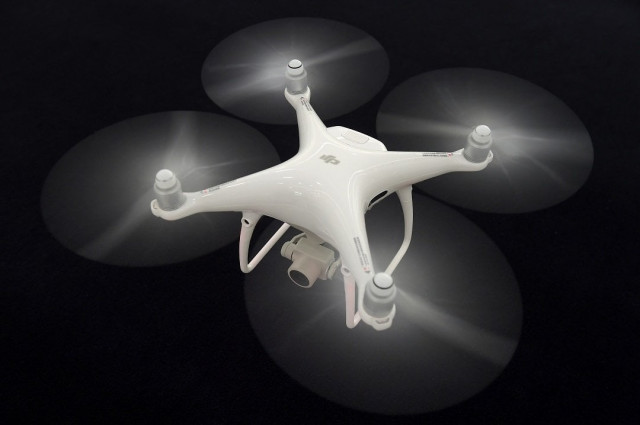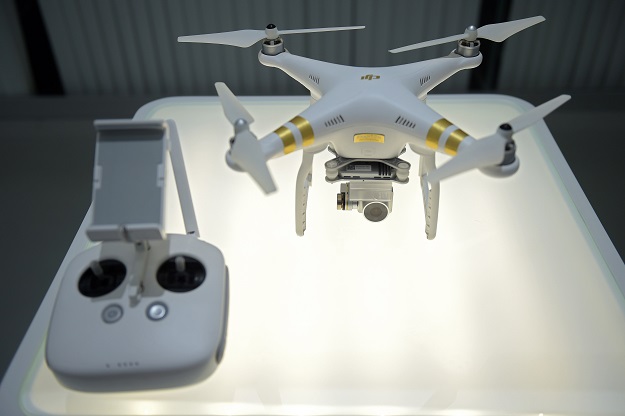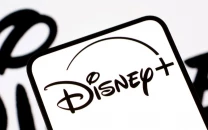China drone king turns to farming
DJI is betting on flying machines that shoot pesticide

China drone-maker DJI is betting on flying machines that shoot pesticide instead of photos to fend off growing competition in the global remote-controlled aircraft market. PHOTO: AFP
The world leader in the civilian drones sector is switching its focus from leisure photography to more professional uses for its unmanned aerial vehicles, and it sees agriculture as the future for the burgeoning industry.
DJI's campus lies within the High Tech Park of the southern city of Shenzhen, China's Silicon Valley, where visitors are treated to a showroom featuring an array of drones.
Half the space of the showroom is dedicated to the recreational machines like the Phantom series, while the other half shows off the "enterprise" drones for agriculture, public safety, professional photography or film-making.
Propelled by rotors, the tiny crop dusting aircraft can carry a liquid payload of 15 kilogrammes (33 pounds) to spray fields.
 PHOTO: AFP
PHOTO: AFPPiloted from a distance, one drone can cover the same surface as around 30 people and it does the job more efficiently, said Jiang Sanchun, manager of a small company that operates pesticide drones for farmers in northern China.
"Within five years, we went from drones that only took photos to machines specialised in first aid or agriculture," DJI vice president Paul Xu told AFP at the company's headquarters in Shenzhen.
DJI was founded in 2006 in an apartment in Shenzhen by Frank Wang, a young graduate with a passion for model planes.
Drones could save lives with rapid heart attack response
The company now makes almost two-thirds of the world's civilian drones, according to an estimate by Frost & Sullivan, a market research company.
Its overall revenues reached $1.5 billion last year.
Xu boasted that DJI "created a new market" in 2013 when it launched its Phantom drone with high-definition cameras.
Some 75 percent of its drones are sold abroad, mostly in the United States and Europe, and they are popular among people flying the crafts for fun or to take aerial photos.
A drone that landed on the White House lawn in 2015 was a DJI Phantom.
 PHOTO: AFP
PHOTO: AFPUS authorities issued news rules last year that clear the way for small, commercial drones to operate across American airspace, while European Union regulators are trying to catch up.
With competition on the rise, DJI is looking for new markets.
In late 2015, it launched Agras MG-1, an octocopter, or eight-rotor drone, which can carry pesticide or fertiliser.
"A drone can monitor energy networks in hard to reach areas or support public security missions," Xu said.
Chinese exam authorities use facial recognition, drones to catch cheats
Chinese police use thermal cameras to track down fugitives. In Brazil and California, firefighters use them to get a complete, bird's eye view of a blaze. Zoom lenses can help authorities locate people in rescue missions in remote areas.
"DJI is entering these enterprise markets because that is where their customer base takes them," said Susan Eustis, president of US-based firm WinterGreen Research.
Worldwide drone sales soared by 60 percent last year, according to the Gartner consulting company. Sales are expected to reach $6 billion this year and nearly double to 11.2 billion by 2020.
Drones for commercial uses represent six percent of the market, but a whopping 60 percent of revenue.
 PHOTO: AFP
PHOTO: AFP"We do see the DJI market domination as likely to continue for the next five years with no serious challengers," Eustis said, noting that the company has the ability to roll out new products within months.
But the Chinese firm is far from dominating the enterprise drone market.
While DJI commands half the general market in small drone sales in North America, its share falls dramatically for the higher priced machines.
In the battle for drones costing more than $7,500, DJI has a 33 percent market share in North America, said Colin Snow, chief executive of Skylogic Research, a consultancy in the drone market.
Snow, writing in a research note, said DJI's strategy of transforming existing products to fit the enterprise market "is not a winner", noting that brands like Lockheed Martin are better known among companies.
But with a quarter of DJI's 8,000-staff dedicated to research, Xu said the company was capable of producing "the necessary cocktail of complex technologies".



















COMMENTS
Comments are moderated and generally will be posted if they are on-topic and not abusive.
For more information, please see our Comments FAQ